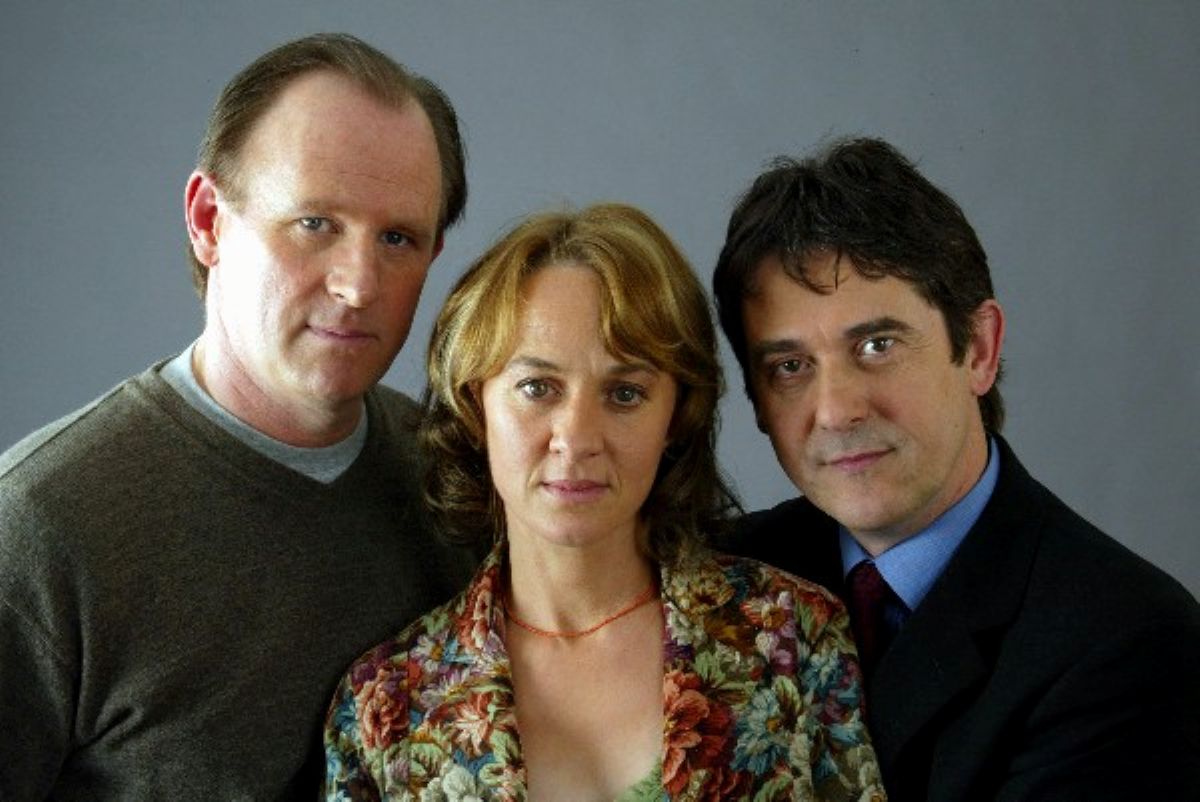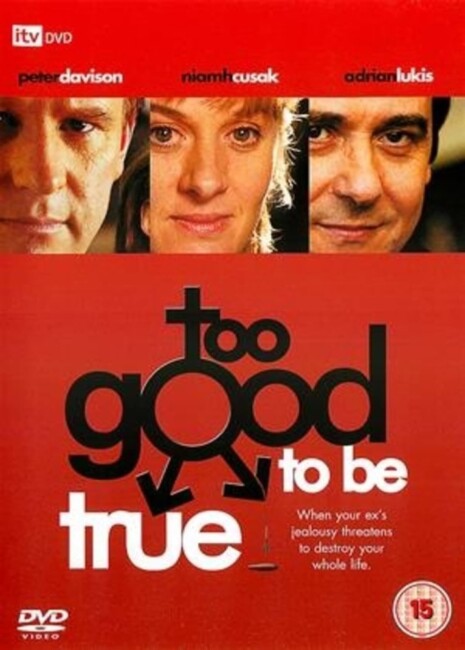Crew
Director – Sarah Harding, Teleplay – William Humble, Producer – Lars Macfarlane, Photography – David Higgs, Music – Jennie Muskett, Production Design – Malcolm Thornton. Production Company – Carlton Television.
Cast
Niamh Cusack (Tina Lewis), Peter Davison (Robert Lewis), Adrian Lukis (Matthew Jarman), Sandra Huggett (Carol Lewis), Heather Louise Cameron (Amy Lewis), Joseph Friend (Charlie Lewis), Caroline Loncq (Stella)
Plot
Robert and Tina Lewis have been divorced for four years and he has married another woman. Tina then meets lawyer Matthew Jarman online and they begin dating. Robert becomes intensely jealous, at first citing only concern for the two children and suspicions about Matthew’s past. However, he becomes increasingly more obsessed, insisting that he and Tina are meant to be back together. When she tries to tell him to go away, his actions become progressively more disturbed.
Too Good to Be True is a movie made for British tv. It is a stalker film in the vein of Fatal Attraction (1987), although a refreshing and radically different one than most of the copycats that came out following Fatal Attraction. The most noticeable difference is that it is the man that is the stalker this time, not the woman as is the case in almost every single Fatal Attraction copy. This swings the story back around to the statistical likelihood in the majority of stalking cases where it is almost always men rather than women that are stalkers. It also reverses the underlying conservative implications the genre has taken on since Fatal Attraction, which was largely construed as a male backlash against feminism.
The other noticeable difference here is that the plot thrust of Fatal Attraction is almost entirely turned inside out. In Fatal Attraction, it was an unbalanced woman who threatened Michael Douglas’s perfect nuclear marriage and family. In contrast, here it is the husband who is trying to retain some absurd notion of the perfect marriage and family who is the unbalanced one, while it is the ex-wife’s perfectly normal desire to engage in a relationship with another man that causes the husband to go off the deep end.
The disturbed husband is cast with Peter Davison, who might be better known as the fifth incarnation of Doctor Who (1963-89, 2005– ). There are probably few actors capable of acting as harmless and boringly anonymous as Davison and, as a result, he makes a surprising choice for the role of the ex-husband, where his very blandness gives the role a deceptive inoffensiveness. The psychology of the various characters is extremely plausibly portrayed. Again this is best seen in contrast to Fatal Attraction – where Fatal played by various thriller conventions, all the drama that takes places in Too Good to Be True derives from the characters and their believably contorted emotions. Even the children manage to give complex and credible reactions.

Too Good to Be True‘s main failing might be that it works well as a human drama but never properly engages as a thriller up until the end. Although there are some times that the dramatics do come across as decidedly creepy – like Peter Davison’s insistence that everything is fine and they all be happy again, followed by Niamh Cusack surrendering herself to him in bed. Although there are other times (at least in this broadcast version seen here) where aspects that approach the more traditional thriller format – like the scenes where Davison beats Adrian Lukis and is arrested and jailed and where in the interim Cusack and Lukis make the decision to move in together – that are so abruptly sped through that it feel like some scenes have been cut out.
It is only in the last fifteen minutes that the film adopts more traditional thriller tactics. These do approach clichés occasionally – we didn’t really need the Harry Manfredini-styled shicking noises on the soundtrack as Peter Davison drives off. Director Sarah Harding delights in leading up to classic thriller anticipations – the expectation when Adrian Lukis goes to get something from the fridge that Davison is going to appear behind the door, that as Niamh Cusack sits on the bed and someone enters the room unseen in the background that it is going to be Davison – and then letting them dissolve into something ordinary. The low-key casualness of this does lead hold some subtly effective shocks – the revelation of the wife lying dead in bed after he drives off, or the moment that Peter Davison appears, stepping over the body and nonchalantly asking “Could you get me the milk? Don’t worry – I’ll get it myself” as though nothing had happened. You don’t realise how much Too Good to Be True is defying psycho-thriller and slasher movie conventions until the ending where Peter Davison is despatched with a kitchen knife and he goes down with only a single blow and doesn’t get back up for a final surprise or even get to give a speech before he expires.


